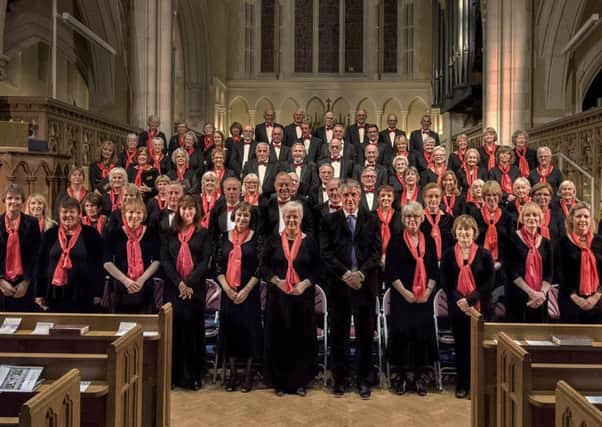Review: Choral society's Mozart and Haydn double bill concert was a joy to hear


We opened with the Haydn. As well as the inspiration of its composer, all music is an echo of its time. The Nelson or “Missa in Angustiis” was indeed written in Time of Trouble: Papa Haydn’s beloved Austria had suffered four defeats in battle to Napoleon and was in distress and disarray.
It did not acquire its Nelson dedication, and even that quite enigmatically, until some years later, but Nelson’s Battle of the Nile victory seems to have earned the epithet in the eyes both of the composer and of a grateful Europe.
Advertisement
Hide AdAdvertisement
Hide AdBut the conscious and profoundly moving journey of the Mass, from its dark and quite scurrying D minor opening to its final resounding D major triumph, is also a statement of faith, from a composer who signed every manuscript AMDG – “to the greater glory of God”. Eastbourne Choral led us with passion and conviction on exactly that journey.
The Mass makes huge demands of concentration and simple stamina: a more typical mass of the period divides the labour, so to speak, alternating sections or movements between chorus and soloists. But in the Nelson, they are almost always woven together in the fabric of the writing, and the chorus is on its feet almost throughout.
It was a challenge to which the performers rose with energy and with the confidence of a choir which has done its preparation: heads were always up for the director, and never buried in copies. And that sense of communication made such a difference for the attentive, appreciative audience. This was truly a shared experience.
It is said that a reduced court budget had robbed Haydn of his wind section for this work – Arts funding evidently being an 18th as well as a 21st Century issue – but the strings soared and danced in the hands of Eastbourne Sinfonia and their expert leader Jenny King. Indeed all sections of the orchestra, including the woodwind restored later for the Mozart, were simply immaculate.
Advertisement
Hide AdAdvertisement
Hide AdJohn Handcorn’s direction is a delight in itself. No baton and nothing even faintly metronomic, but a flowing and flexible style which draws the performers rather than driving them. His tempi here were brisk and clear, and the singers responded. Eastbourne Choral is genuinely fortunate to have a director so expert and so intuitive.
All four soloists showed consummate control and gorgeous quality. Their dialogue with the chorus, at so many points, was perfectly balanced, and their blend in the duets and quartets was beautiful: more opera than oratorio, but in the best sense. Soprano Catrin Woodruff, with possibly the most to do, ranged from anguished and war-torn to serene and effortless. Mezzo Thalie Knights brought a dramatic edge to the Gloria, and beautifully led off an exquisite Agnus Dei.
After such a vibrant, energised Haydn, what could we expect of the Mozart? Once again there is a narrative behind it: a dying composer dictating sketches and motifs for what he believed to be his own Requiem, darkly commissioned by an anonymous messenger who might almost have been Death himself. The writing of the final score, largely by his pupil Sussmayer, is so authentic that it almost conjures disbelief. Perhaps one day some musicologist will discover a long-lost original manuscript which had lain hidden under the mattress….
Eastbourne Choral seized our attention from the very first bars. There is no serenity in the opening Requiem Aeternam, only a soul-searching and pleading appeal, and the choir filled the movement with both passion and sincerity. It set the mood perfectly, and that sense of drama and intensity never, ever faltered. Rex Tremendae was delivered with fear in the voices, the Confutatis was a cry of agitation and the Lachrymosa a swelling wave of prayer.
Advertisement
Hide AdAdvertisement
Hide AdAlongside the chorus, bass soloist Jozik Kotz was equally dramatic in his rich Tuba Mirum, gloriously echoed in the lovely high range of tenor Paul Austin Kelly. Like the choir behind them, they were just a joy to hear.